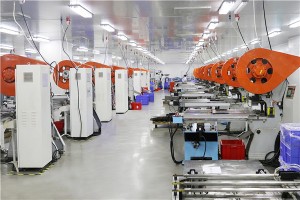The tin can production process has evolved significantly over the years, prioritizing safety and environmental protection. As a staple in food and beverage packaging, tin cans are not only durable and efficient, but are also produced using methods that minimize their ecological footprint.
The first stage of the tin can production process begins with the sourcing of raw materials. Tin cans are primarily made of steel, which is usually coated with a thin layer of tin to prevent corrosion. Steel is often sourced from recycled materials, which significantly reduces the environmental impact associated with mining and processing new metals. This commitment to using recycled materials not only improves the sustainability of the production process, but also ensures that safety standards are met, as recycled materials undergo rigorous quality checks to eliminate contaminants.
Once the raw materials are in place, the next step is to manufacture the tank body. This process involves cutting, shaping, and welding the steel plates into a cylindrical shape. Advanced machinery is used to ensure precision and efficiency, minimizing waste and energy consumption. Safety is paramount during this phase, and occupational health standards must be strictly adhered to to protect workers from potential hazards associated with the operation of machinery. In addition, the use of automated systems can reduce human error, further improving the safety of the production environment.
Once the can body is formed, the next step is to apply a protective coating. This step is critical to ensure the safety of the can’s contents. Food-grade coatings are applied to prevent any interaction between the metal and the food or beverage, thus safeguarding the health of the consumer. These coatings are developed with the environment in mind, using non-toxic materials that meet regulatory standards. The production process is designed to minimize emissions and waste, with many manufacturers implementing closed-loop systems to recycle solvents and other materials used in the coating process.
The final stage of the tin can production process involves printing and finishing. This includes applying labels and designs, which not only enhance the aesthetics of the can but also provide necessary information to the consumer. The inks and adhesives used in this stage have a lower impact on the environment, ensuring that they are free of harmful chemicals. In addition, manufacturers are increasingly adopting digital printing technology to reduce waste and energy consumption, in line with environmental principles.
In summary, the tin can production process demonstrates the industry’s commitment to safety and environmental protection. From sourcing recycled materials to implementing advanced manufacturing techniques, sustainability is taken into account at every stage of production. As consumers become more aware of the impact of packaging on the environment, the tin can industry continues to innovate to ensure its production processes remain safe, efficient, and environmentally friendly. By prioritizing these values, the industry is not only meeting regulatory requirements, but also contributing to a more sustainable future.
Post time: Dec-09-2024







